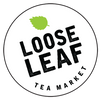*This post may contain Amazon or other affiliate links
Imagine this: it's the plot of a thrilling spy movie, but instead of international espionage, the story is playing out in your kitchen, your bathroom, and even in your lunch box. The villains? Microplastics, an army of microscopic particles that are silently making their way into our lives, our meals, and ultimately, our bodies.
Their size, smaller than a sesame seed, allows them to fly under our radar, but they're changing our bodies' delicate internal balance, creating issues that could potentially turn serious. Get ready to uncover the top 10 ways these covert agents are infiltrating your daily routines and some simple swaps to help you outsmart them.

Share this on Pinterest.
So What's The Problem With Microplastics, Anyways?
Okay, they're everywhere, but what do microplastics do to your body? Consuming microplastics poses a range of health risks, but two key areas of concern stand out: the impact on hormonal balance and gut health.
Firstly, microplastics are notorious for disrupting our body's delicate hormonal balance. These tiny particles carry toxins that act as endocrine disruptors, interfering with our body's hormonal communication system. This disruption can manifest in various ways, from stubborn skin conditions like acne to menstrual irregularities and intensified PMS symptoms.
Secondly, microplastics may contribute to gut health issues. Research suggests that ingested microplastics can alter the composition of our gut microbiota, the complex community of microorganisms that plays a crucial role in our health. Changes in the gut microbiota have been linked to a wide range of health problems, from digestive issues and inflammation to mood disorders and compromised immunity. Thus, consuming microplastics can potentially disrupt this vital ecosystem, leading to a cascade of health problems.
And that's just scratching the surface. We're also talking about potential risks to brain development, a heightened risk of life-altering diseases like cancer, possible damage to vital organs like your liver and kidneys, and even triggering heart health concerns. So yeah, they're not exactly your body's best friends. But we're not here to simply spread doom and gloom - let's discover how we can take action!

The 10 Most Common Sources Of Microplastics
The same things that are wreaking havoc on our beautiful planet are also staging a silent siege on our bodies! Ready to uncover these common culprits? Let's dive in.
- Plastic Straws—Slowly but surely, they're releasing stealthy microscopic particles into your beverages. Swapping these for reusable metal or bamboo straws means you're sipping clean, and plastic-free. Check out these awesome glass straws.
- Plastic Cutlery—Picture your plastic spoon, the surface gradually eroding away with each touch of your hot meal, leaching unseen plastic particles into your food. By choosing to carry a reusable cutlery set, you're safeguarding your meals from this sneaky infiltration. Here's our favorite bamboo utensils set.
- Bagged Tea—The moment hot water hits your teabag it's silently breaking down the hidden plastic in the bag. By opting for loose leaf tea with a reusable infuser, you're ensuring a brew free from plastic! Shop loose-leaf tea bestsellers.
- To-Go Coffee Cups—Each time hot coffee or tea fills your takeaway cup, the heat is secretly disintegrating the plastic lining, shedding invisible particles into your morning brew. Make your own at home, or bring a reusable mug to the cafe! This is our favorite for iced tea and this is our favorite for hot tea.
- Bottled Water—Another reason to not drink bottled water! Plastic water bottles quietly seep microplastics into your water under the influence of heat and time, especially if you resuse them. Switching to a reusable glass or metal bottle filled with filtered tap water stops this insidious seepage.
- Bottled Sodas and Teas—Each sip might be accompanied by invisible plastic particles, making their way right into your system. By favoring drinks in glass bottles or cans, or better yet, making your own at home, you can enjoy a truly clean and refreshing experience. Try this homemade tea soda recipe!
- Beauty Products—Your favorite body scrub, shampoo, or even toothpaste might be gleaming with tiny microplastics that aren't just scrubbing your skin or teeth, but also flowing down your drain, entering waterways, and potentially creeping into your food chain. Checking labels and choosing natural, plastic-free alternatives keep your beauty and hygiene rituals truly clean.
- Plastic Food Containers— Your leftover pasta sitting in its plastic container could be silently weeping microplastics into your lunch. Switching to glass containers or stainless steel containers ensures your meals stay wholesome and untainted!
- Microwave Meals—It's scary to think about that super thin plastic melting into your food as it heats. The heat not only warms your food but also prompts the container to shed microplastics into your meal. Choosing fresh, homemade meals or ones packaged in safer materials can save you from this havoc.
- Chewing Gum—While it freshens your breath, it may have a dirty secret. Its base often contains plastic that can release microplastics as you chew. Opting for natural, plastic-free gum helps keep your minty moments guilt-free. We like this brand, although the flavor doesn't last super long. (Comment below if you have a better alternative you like!)
In a world painted with the brush of convenience, where the quick and easy often takes precedence, we can't forget the hidden cost—we are unknowingly our bodies with microplastics that are harming not just the environment, but our own health too.

Shop All Healing Loose-Leaf Teas
Thanks so much for reading! If you want to learn more about the problems with bagged tea, check out our blog Hey Tea Lover: If You're Drinking Tea From A Teabag, You Might Be Consuming Thousands Of Plastic Particles With Every Cup.
Got any further tips, favorite alternatives, or thoughts to share? We're all in this together, so drop them in the comments below!


